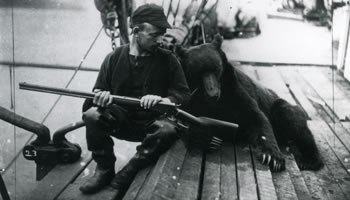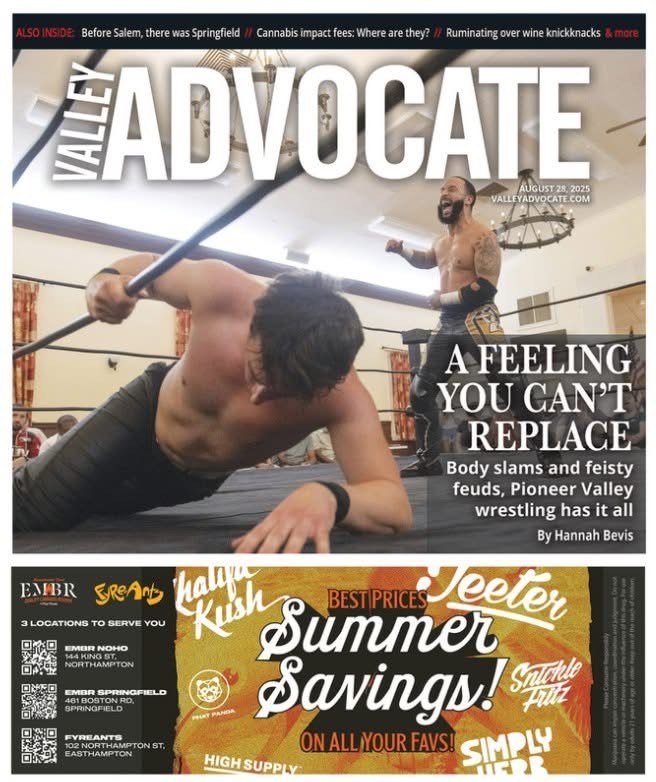Documentary film purists are apoplectic over the fractionalization and miniaturization of the media. We’ve gone from 35mm theatrical releases to 16mm school showings to television broadcasts and the final indignity, tiny private screenings on your computer courtesy of YouTube. But I’m not indignant; in fact I’m ecstatic about the changes. I gave up being a film purist years ago. The media, until some conglomerate takes it away from us, has been democratized.
The usual trajectory for a self-initiated documentary film is conception, proposal, rejection, proposal, some more rejections, partial funding, desperate fundraising, preliminary shooting, more fundraising, competition for broadcast time, broadcast, distribution, obscurity. It’s not unusual for films created by my film company, Florentine Films/Hott Productions, to take five years to reach the television screen and we’ve had several projects hit the eight-year mark.
Case in point. In 1997 Tom Litwin, director of the Clark Science Center at Smith College, approached us about producing a film on the Harriman Alaska Expedition of 1899. Edward Harriman, the chair of the Union-Pacific Railroad organized a cruise from Seattle to Siberia, following the Alaska coastline. He took along every well-known scientist, artist and writer he could find – John Muir, George Bird Grinnell, Edward Curtis, C. Hart Merriam – to name a few. Litwin’s idea was to retrace the expedition with our own expedition ship and bring along modern-day counterparts to the original participants. An ambitious plan indeed and I was skeptical that we would ever pull it off.
approached us about producing a film on the Harriman Alaska Expedition of 1899. Edward Harriman, the chair of the Union-Pacific Railroad organized a cruise from Seattle to Siberia, following the Alaska coastline. He took along every well-known scientist, artist and writer he could find – John Muir, George Bird Grinnell, Edward Curtis, C. Hart Merriam – to name a few. Litwin’s idea was to retrace the expedition with our own expedition ship and bring along modern-day counterparts to the original participants. An ambitious plan indeed and I was skeptical that we would ever pull it off.
But Tom is a bulldog and we started the fundraising process. After some early success we had enough money to start filming in Alaska in the summer of 1999 (for you mathematicians out there, that’s two years after we submitted the first proposals.) We cut together a sample, but there really was no place to show it. So back to fundraising, another summer of filming in 2000, and finally, we had the full budget in hand. We hired an expedition ship, brought along our crew of scientists, writers and artists, and finished filming in 2001. By 2003 we were on the air with a PBS national broadcast, a mere six years after starting the project. (Check out The Harriman Alaska Expedition Retraced web site at or get the two-hour film from Bullfrog Films.)
So, that’s only six years before any of the edited sequences were seen by anyone other than the filmmakers themselves. Contrast that with what we’re doing on our next Alaska project.
Once again the intrepid Dr. Litwin approached us with an Alaskan, freeze-your-butt-off idea. This time he wanted to do something on the climate change issues in the Bering Sea, an area we had visited many times during the production of the Harriman film. We had some funding upfront, so rather than wait for a commitment from a broadcaster, we headed up to the Bering Sea in March 2008 to film on board the US Coast Guard Cutter Healy and then later on in May, on the Alaskan Yup’ik Eskimo island of St. Lawrence in the Bering Strait.
When we returned from filming we knew we didn’t have enough footage for the two-hour film we’d envisioned but we did have plenty for sections of the film. We weren’t sure what good that would do us until we received a fortuitous eblast from NOVA on PBS promoting a film and its attendant video podcasts. So I called NOVA and asked if they would consider showing footage from a non-NOVA film on their website. The answer was why not and that started the ball rolling on our first adventure in vodcasting (video podcasting for longer films).
We editing the material into four, ten-minute films in the fall of 2008 and now, in early 2009 they are up and running on the NOVA website (in conjunction with their broadcast of Extreme Ice on March 24), and on YouTube and iTunes. The title is On Thin Ice in the Bering Sea. The short films focus on native life on St. Lawrence Island and scientific investigation aboard the Coast Guard Cutter Healy. These two locations provide us with emblems for the two poles of our project, traditional native knowledge and western science. We’re concerned with the connections between the two, the interactions, and the disparities in the two widely-varying points of view. You can see all four films right now on Nova's website or on YouTube.
That’s still two years from conception, but we’ve got films in front of public eyeballs for a fraction of the cost of producing a feature-length documentary for broadcast. Maybe we’ll get the funding to expand the four short films to an hour, but we don’t have to wait another three or four years to get the money in hand, and finish filming and editing, before the public can see the footage.
What’s been turned on its head is the idea that a film cannot be shown publicly until it is completely finished. It is not unusual for a completed film to be broken up into sections and shown on the web, but the new paradigm is to put sections of a film onto computer screens long before the film is finished, if ever.
Documentary filmmakers have been stuck with the constraints of broadcast length for decades. Either make your film 56:46, 86:46, or 110:46 or forget it (unless your lucky enough to get on HBO where they don’t seem to care how long it is.) But now, you can produce a movie of any length and get it in front of an audience without having to wait for the broadcast gatekeepers to let you in.
Of course, the question becomes: how many people really see your film on the Internet versus the (sketchy) predictability of TV ratings? That brings up the question of promotion, social media, and the marketplace, which is a whole ‘nother enchilada.


